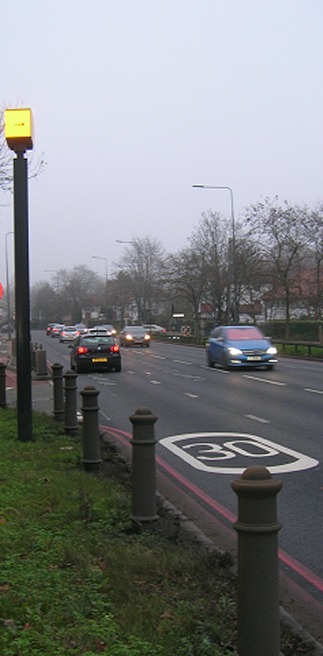Four
surprising speed camera facts
In its latest online news item, the
PetrolPrices.com website highlights some interesting information on speed cameras
and the fines they generate.

PetrolPrices.com
is a useful website with regular news items of interest to motorists but also
a local motor fuel prices alert system where they will send you a daily email
with local fuel prices in your area. Just visit their website, pop in your postcode
and up pops information on local fuel prices. More

What
is HADECS?
HADECS 3 is short for Highway Agency Digital Enforcement Camera
System 3 which is one the newest speed cameras to be installed on UK roads. Current
locations include the M1 in Derbyshire, M6 in Staffordshire, M25 in Surrey, M20
in Kent, M25 in Kent, M62 in West Yorkshire and M4/M5 in Somerset. Following
Home Office approval the first Redflex Hadecs 3 system went live on the M25 motorway
between junctions 5 and 6/7 on the 22nd October 2014. Between the 22nd October
and 25th November 2014 some 668 motorists had been caught speeding by the new
speed camera, many of whom are calling it a 'stealth camera'.
Photo:
a speed camera located on the North Circular road just north of Chiswick roundabout
- during bridge repair works the speed limit has been reduced from 40 to 30mph
and it's been catching many drivers on the section after the works.
Posted:
170901 |  | PetrolPrices.com
is well aware that there are plenty of myths about speed cameras and speeding
fines and to shed some light on the issue they have a news item with things
you might not know about speed cameras and the fines that they generate.
Speeding
fines now start at £100
Most people know that speeding fines have
increased. They now cost £100 as a standard, rather than £60. However,
many people are unaware that there is a new way of claculating speeding fines.
They can now be based on up to 175% of your weekly income – meaning that
fines can actually be significantly higher than £100. This means that someone
earning £30,000 a year (or £577 a week) could face a maximum fine
of up to £866 for a speeding offence. The new guidelines advise that these
higher rate fines should be used for more serious offenders, rather than (for
example) someone doing 32 in a 30mph zone. More serious offences are known
as Band C offences. They apply to anyone doing ‘well in excess’
of the limit on a particular road.
HADECS cameras work all the time
HADECS
cameras are the ones put up by Highways England. They are the most cutting edge
technology of the speed camera world. HADECS cameras are seen on motorways such
as the M1, M6, M25 and M62 and they are in operation all of the time. There are
different styles of these cameras, many of which are smaller than traditional
cameras. Some use a radar system that takes just 0.2 milliseconds to register
your speed – and your number plate.
Mobile radar detection vans
only work on one lane
Mobile speed cameras – or radar detection vans
– are usually operated by the local police force. They tend to be used in
accident blackspots. For police to use mobile cameras, there needs to be a sign
up to alert motorists that they are present. Mobile speed cameras only work on
one lane. However, this doesn’t have to be the lane they are closest to.
Mobile speed cameras also only work on a straight section of road. They
have a range up to two miles but can’t see around bends or over hills. | Traffic
light cameras are multi-functional
Traffic
light cameras do more than just watch for red light offences. As original traffic
light camera models were replaced, new multi-functional models were installed.
The new models mean that you can get a speeding ticket from a traffic light camera
even if you didn’t skip the light. |
|






